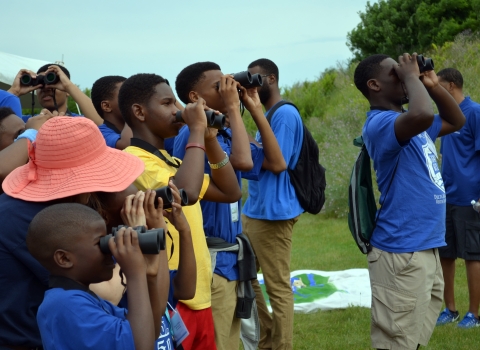The U.S. Fish and Wildlife Service is seeking public comment on a revised proposal to designate critical habitat for the Florida bonneted bat under the Endangered Species Act (ESA).
The Service is proposing revisions to the designation of critical habitat based on substantial public comment and new information that was received following the Service’s 2020 proposal. The revised proposal includes changes to the physical or biological features and the criteria and methodology used to identify those specific areas that constitute critical habitat.
“The Service is committed to working with local communities, state and federal agencies, Tribes, conservation groups and private sector partners to ensure they have the tools they need to protect and recover America’s imperiled species,” said Service Regional Director Leopoldo Miranda-Castro. “Revising the proposed critical habitat ensures we incorporate the public’s comments and best science available into protecting Florida bonneted bats.”
The revised proposal would designate approximately 1.2 million acres of critical habitat across nine units located in 13 central and south Florida counties and marks a 21% reduction in critical habitat from the 2020 proposal while still meeting the Florida bonneted bat’s conservation needs. The counties are Charlotte, Collier, DeSoto, Glades, Hardee, Hendry, Highlands, Lee, Miami-Dade, Monroe, Okeechobee, Osceola and Polk.
Designating critical habitat under the ESA does not affect private landowners unless they implement an action involving federal funds, permits or activities. Federal agencies must ensure actions they fund, permit or conduct do not destroy or adversely modify designated critical habitats, thereby helping to protect and conserve species for future generations. Critical habitat designations do not affect land ownership or establish a refuge, wilderness, reserve, preserve or other conservation area conservation area
A conservation area or wildlife management area is a type of national wildlife refuge that consists primarily or entirely of conservation easements on private lands. These conservation easements support private landowner efforts to protect important habitat for fish and wildlife. There are 15 conservation areas and nine wildlife management areas in the National Wildlife Refuge System.
Learn more about conservation area , nor allow the government or public to access private lands.
The proposed critical habitats fall within the ranges of 42 federally listed species and their existing designated critical habitats; 89% of the proposed designation overlaps existing conservation lands. This proposal would designate approximately 121,500 acres as critical habitats in areas not already designated as critical habitat or within existing conservation lands. A draft economic analysis conducted for the proposed critical habitat designation estimated the total incremental section 7 costs associated with the proposal to be $70,800 per year. While the proposed critical habitat area is relatively large, the costs are comparatively low due to strong baseline protections that already exist for this listed species, a consultation area map already in use by managing agencies, and the presence of other listed species in the area.
Florida bonneted bats are large insectivorous, nonmigratory tropical bats endemic to Central and South Florida. They are found in forests, wetlands and other natural habitats, and have also been recorded in residential and urban areas. The species was listed as endangered in 2013 and has one of the most restricted distributions of any bat species in the Western Hemisphere. Their exact population size is unknown but estimated to be in the low hundreds to low thousands.
The bonneted bat reproduces slowly, produces small litters, and has few and relatively isolated populations across a very restricted range. These life history traits make it especially vulnerable to current threats, including the degradation, isolation, or loss of foraging and roosting habitat from development, sea-level rise and agriculture. Based on the expected rates of human population growth and urbanization in southern Florida, nearly all agricultural and private natural lands are predicted to be converted to developed land by 2060.
The ESA allows the Service to identify areas essential to the conservation of endangered or threatened species. The Secretary of the Interior makes this designation on the basis of the best scientific data available and after taking into consideration the economic impact, the impact on national security, and any other relevant impacts of specifying any particular area as critical habitat.
The Service will accept comments regarding the revised proposed rule or draft economic analysis. The revised proposed rule, including the draft economic analysis will publish in the Federal Register on November 22, 2022, opening a 60-day comment period. The service will accept comments received or postmarked on or before January 23, 2023. The revised proposal and information on how to submit comments can be found on www.regulations.gov by searching under docket number FWS-R4-ES-2019-0106.
Requests for a public hearing on the revised proposed rule must be submitted in writing by January 6, 2023, by U.S. mail to: Public Comments Processing, Attn: FWS–R4–ES–2019–0106; U.S. Fish and Wildlife Service, MS: BPHC; 5275 Leesburg Pike; Falls Church, VA 22041-3803.
More information about this species is available in our Frequently Asked Questions.



